Sweet & Tangy Mornings: 15 Delicious Rhubarb Breakfast Recipes to Brighten Your Day
As the vibrant stalks of rhubarb emerge, signaling the peak of spring and early summer, it’s the perfect time to infuse your mornings with its unique tart and sweet flavor. To celebrate this delightful seasonal ingredient, we’ve gathered 15 incredible rhubarb breakfast recipes from talented food bloggers and our own kitchen, designed to tantalize your taste buds and inspire your breakfast routine. From fluffy rhubarb pancakes and moist rhubarb muffins to comforting rhubarb oatmeal, refreshing rhubarb smoothies, and even decadent rhubarb breakfast cakes and coffee cakes, you’ll find an array of options to savor.
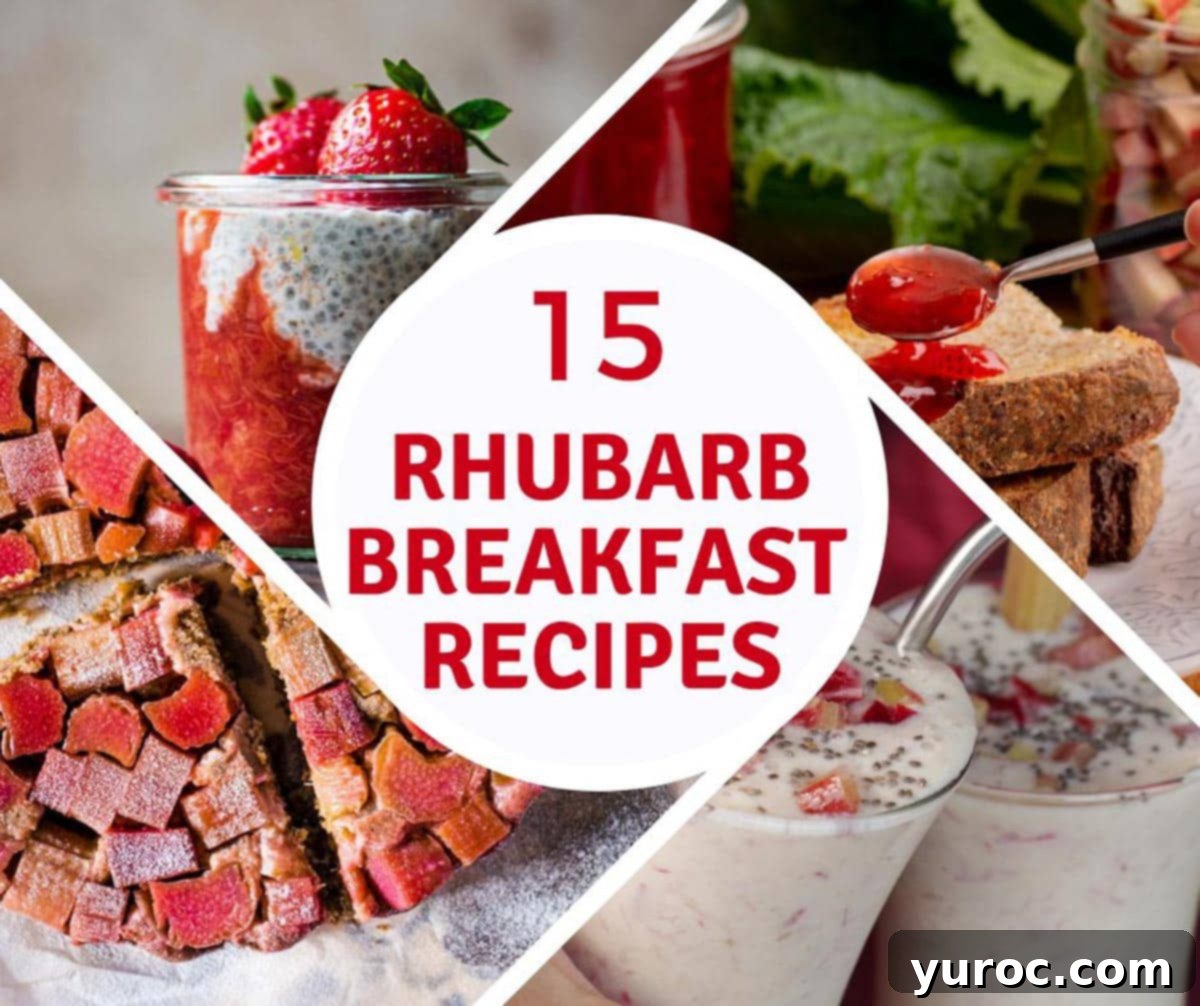
While rhubarb truly shines in spring and early summer, these versatile recipes are perfect for any time of the year. The beauty of rhubarb is its ability to be frozen, allowing you to enjoy your harvest long after the season ends. Simply substitute fresh rhubarb with frozen in most recipes – frozen rhubarb retains its flavor and can last up to a year in your freezer, making it a fantastic ingredient for year-round culinary adventures.
[feast_advanced_jump_to]
Whether you cultivate your own rhubarb patch, discover it at a bustling farmers’ market, or pick it up from your local grocery store, rhubarb is an essential spring and early summer delight not to be missed. Its distinct tang adds an unparalleled depth to both sweet and savory dishes, making it a favorite among home cooks and chefs alike.
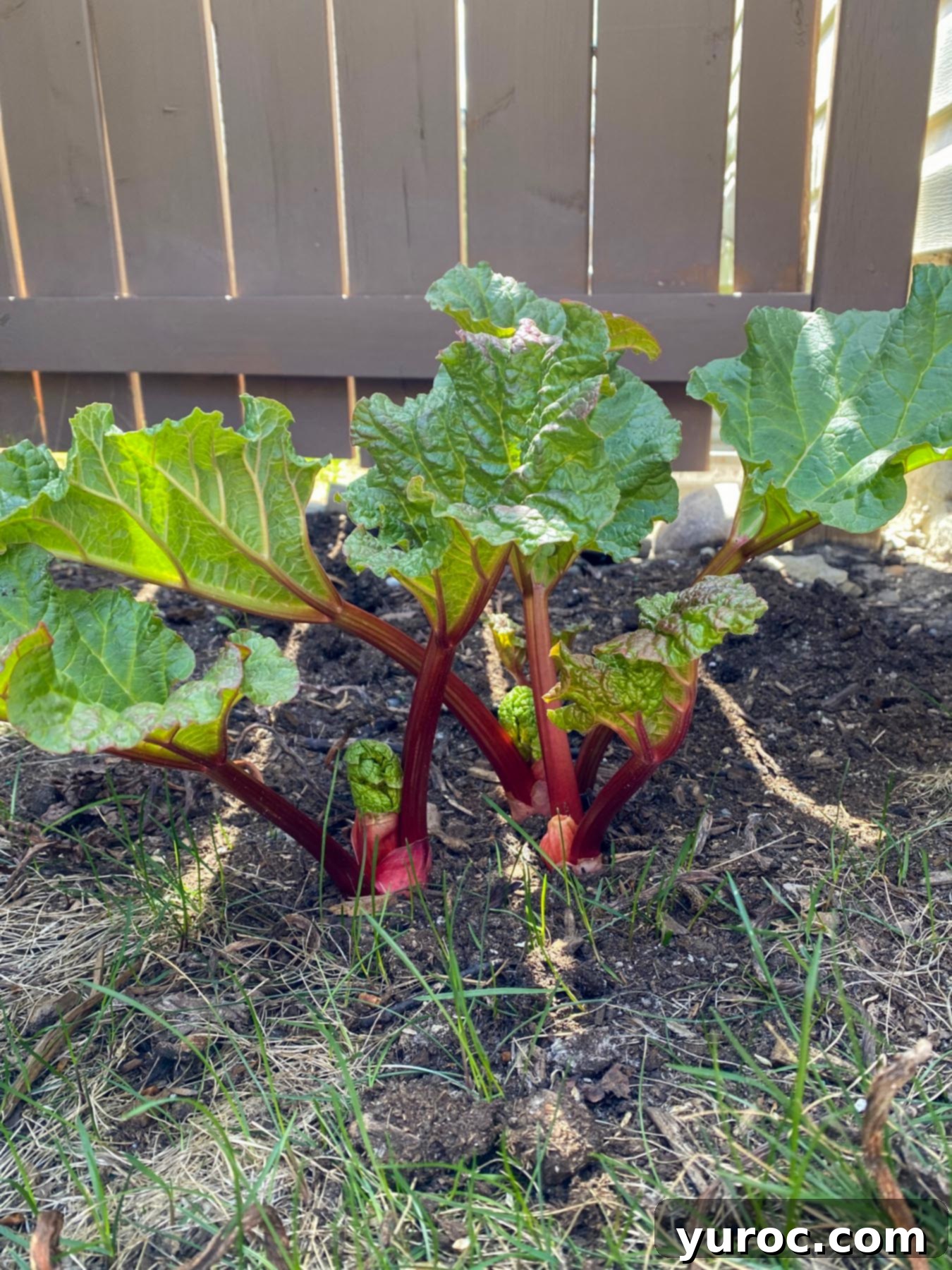
If your schedule doesn’t permit immediate cooking after harvesting or buying rhubarb, don’t fret! Proper storage is simple and effective. Begin by trimming off and discarding the leaves, as they contain oxalic acid and are not edible. Then, wash the stalks thoroughly, chop them into convenient ½-inch pieces, and place them into a freezer-safe zip-top bag. This method allows you to preserve your rhubarb for months, ready to be incorporated into your favorite recipes whenever inspiration strikes.
Embracing rhubarb for breakfast is an exceptional way to celebrate this seasonal bounty. Its naturally tart flavor pairs wonderfully with a touch of sweetness, creating a balanced and refreshing start to your day. Beyond its delightful taste, rhubarb is also a good source of fiber, vitamin K, and antioxidants, contributing to a healthy and energizing morning meal.
Delicious Rhubarb Breakfast Recipes
Check out this Healthy Rhubarb Muffin recipe!

Check out this Rhubarb Smoothie recipe!
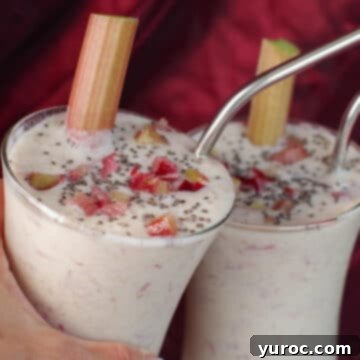
Check out this Rhubarb Pancake recipe!
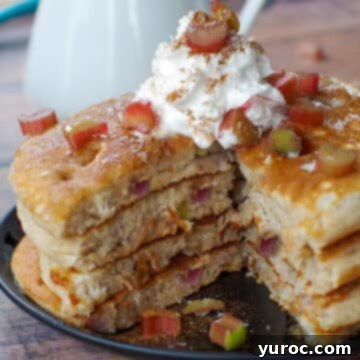
Check out this Rhubarb Coffee Cake recipe!

Check out this Stewed Rhubarb recipe!

Check out this Rhubarb Puff Pastry Tart recipe!

Check out this Rhubarb Chia Pudding recipe!
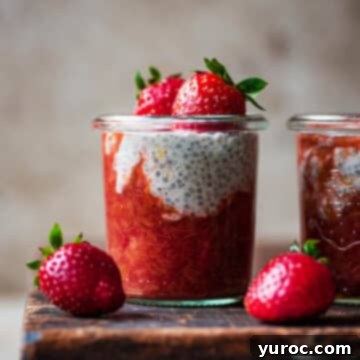
Check out this Rhubarb Granola recipe!

Check out this Healthy Rhubarb Bread recipe!

Check out this Rhubarb Baked Oatmeal recipe!
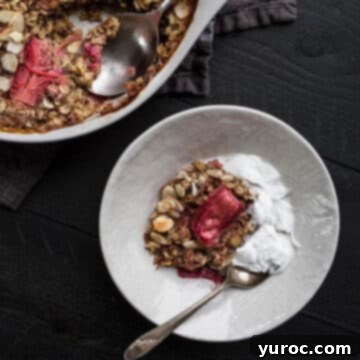
Check out this Rhubarb Fritters recipe!

Check out this Strawberry Rhubarb Jam recipe!
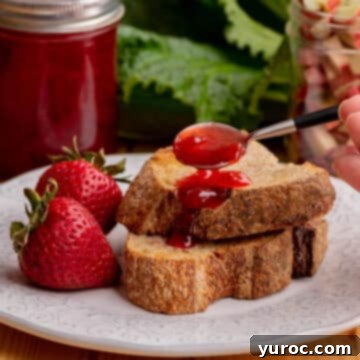
Check out this Rhubarb Overnight Oats recipe!
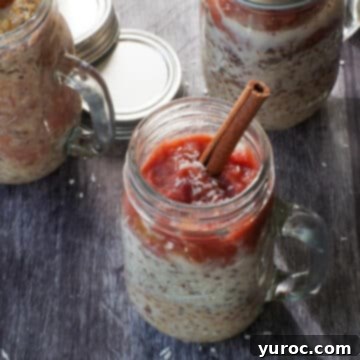
Check out this Rhubarb Cake recipe!
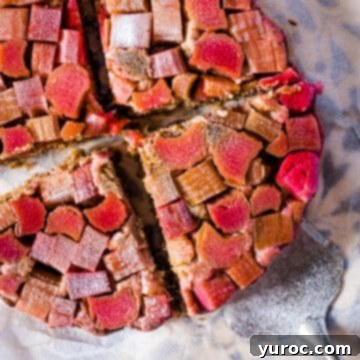
Check out this Rhubarb Toast recipe!

🥗 What to Serve with Rhubarb for Breakfast
While rhubarb breakfast recipes are delicious on their own, pairing them with complementary sides can create a truly complete and satisfying meal. The sweet and tart notes of rhubarb dishes often balance wonderfully with fresh fruits or savory breakfast meats, offering a delightful contrast.
- Old Fashioned Fruit Salad (with Honey Lime Dressing) (shown) – A vibrant fruit salad adds freshness and a touch of extra sweetness, perfectly complementing rhubarb’s tang.
- Air Fryer Turkey Sausage – For a savory counterpoint, lean turkey sausage provides protein and a hearty element that balances the brightness of rhubarb.
- Crispy bacon or ham – The salty, rich flavors of cured meats offer a classic pairing with sweet breakfast items.
- Scrambled eggs or omelets – A simple egg dish can provide a light, protein-rich side without overpowering the rhubarb’s unique flavor.
- Yogurt or cottage cheese – A dollop of plain Greek yogurt or cottage cheese can add creaminess and protein, especially when topped with stewed rhubarb or rhubarb compote.

Expert Tips for Working with Rhubarb
Working with rhubarb is generally straightforward, but a few expert tips can ensure your dishes turn out perfectly every time, maximizing flavor and texture.
- Measure Frozen Rhubarb Correctly: When using frozen rhubarb in your recipes, it’s crucial to first defrost it completely and then drain any excess liquid before measuring. Frozen rhubarb contains more water which, upon thawing, can significantly alter the consistency and moisture content of your recipe if not properly accounted for. This step prevents soggy baked goods or overly thin sauces.
- Keep Rhubarb Fresh: To maintain the freshness of raw rhubarb stalks, it’s best to leave the leaves attached until you are ready to prepare them. The leaves help in retaining moisture, thereby keeping the stalks crisper and fresher for a longer duration. Store your rhubarb in the refrigerator, ideally wrapped loosely in a damp paper towel within a plastic bag, for optimal freshness.
- Avoid Reactive Cookware: Rhubarb is naturally high in acidity, which can react negatively with certain metals like aluminum or cast iron (unless well-seasoned). This reaction can lead to an undesirable metallic taste in your dish and potentially cause discoloration of the rhubarb. Always opt for non-reactive cookware, such as stainless steel, enamel-coated pots, or glass baking dishes, to preserve the true flavor and vibrant color of your rhubarb. RecipeTips.com
- Properly Prepare Rhubarb Stalks: Before any cooking begins, it’s essential to trim off and discard all rhubarb leaves. These leaves contain oxalic acid, which is toxic and should never be consumed. Once the leaves are removed, wash the stalks thoroughly under cold running water to eliminate any dirt, debris, or residual garden soil. Chefs Resource
- Cut Uniform Pieces for Even Cooking: For consistent texture and cooking throughout your dish, always aim to chop rhubarb into uniform pieces, typically around 1-inch in length. Uniformity ensures that all pieces cook at the same rate, preventing some from becoming mushy while others remain too firm.
- Balance the Tartness: Rhubarb is known for its intense tartness. Most recipes will call for a good amount of sugar or another sweetener to balance this out. Taste your rhubarb before adding sugar, as its tartness can vary, and adjust the sweetener to your preference. Other ingredients like berries (especially strawberries) or oranges also complement and temper rhubarb’s tartness beautifully.
❔ Rhubarb FAQs
There are numerous wonderful ways to utilize excess rhubarb! One of the most common and effective methods is freezing it; simply chop and store it in freezer bags for up to a year. Beyond freezing, you can transform it into delicious rhubarb compotes, jams, sauces, crisps, pies, crumbles, and even quick breads. Many recipes, including those listed here, are perfectly suited for using frozen rhubarb (just remember to defrost and drain it before measuring). You can also freeze any extra stewed rhubarb or rhubarb compote for later use. For more inspiration, explore additional rhubarb recipes found at the bottom of this post.
Rhubarb’s distinct tartness pairs beautifully with a wide array of flavors, creating delightful contrasts and harmonies. Classic pairings include sweet fruits like strawberry, raspberry, and orange, which help balance its acidity. Spices such as cinnamon, cardamom, and vanilla enhance its warmth, while ingredients like coconut, almond, and honey add complementary sweetness and texture. Surprisingly, it also mixes well with anise and fennel for a unique twist, and even savory elements like pork can create interesting culinary experiences.
Generally, no, you do not need to peel rhubarb. The skin is quite thin and tends to soften and break down during the cooking process, adding to the dish’s texture and color without being stringy. However, if you have particularly thick or very fibrous rhubarb stalks, or if you prefer a smoother consistency, you can lightly peel off the tougher outer layer using a vegetable peeler. This is usually more of a textural preference than a necessity.
To keep fresh rhubarb at its best, store it in the refrigerator. It’s recommended to leave the leaves attached until you’re ready to use the stalks, as this helps them retain moisture and stay fresher for a longer period. For optimal results, wrap the rhubarb stalks loosely in a damp paper towel and then place them inside a plastic bag or an airtight container. This method can keep fresh rhubarb vibrant for up to 1-2 weeks.
Rhubarb is incredibly versatile for breakfast dishes and can be cooked in various ways depending on your desired outcome. It can be baked into muffins, breads, or cakes; stewed to create a delightful compote; or gently sautéed. Stewing rhubarb with a touch of sugar and a splash of water is a particularly popular method, as it yields a soft, flavorful compote that is perfect for topping pancakes, waffles, oatmeal, yogurt, or even serving alongside pastries. Baking rhubarb into dishes allows its flavors to meld beautifully with other ingredients, creating a comforting texture.
⭐ Reviews
If you loved this post or any of these delicious rhubarb breakfast recipes, please take a moment to leave a star rating! Your feedback helps us create more content you’ll enjoy.
How useful was this post?
Click on a star to rate it!
Average rating 5 / 5. Vote count: 3
No votes so far! Be the first to rate this post.
More Rhubarb Recipes for Every Occasion
Once you’ve mastered rhubarb for breakfast, you’ll discover its endless possibilities throughout the day. From sweet desserts to tangy preserves, rhubarb’s unique flavor profile lends itself beautifully to a variety of dishes. Explore these additional rhubarb recipes to continue your culinary journey with this incredible ingredient:
- Rhubarb Squares
- Microwave Rhubarb Crisp (in a Mug)
- Oatmeal Brown Sugar Rhubarb Cookies
- No Bake Rhubarb Dessert
We hope this collection of rhubarb breakfast recipes inspires you to get into the kitchen and celebrate the vibrant flavors of the season. Whether you’re a long-time rhubarb enthusiast or new to its charm, these dishes offer delicious and exciting ways to start your day. Happy cooking!